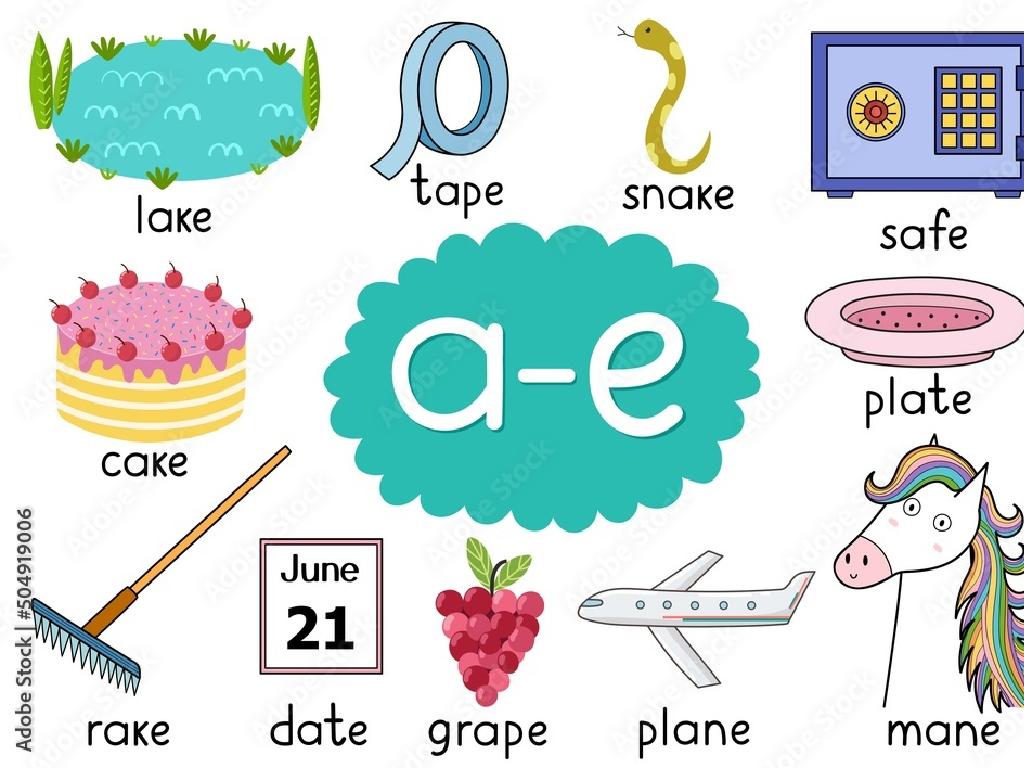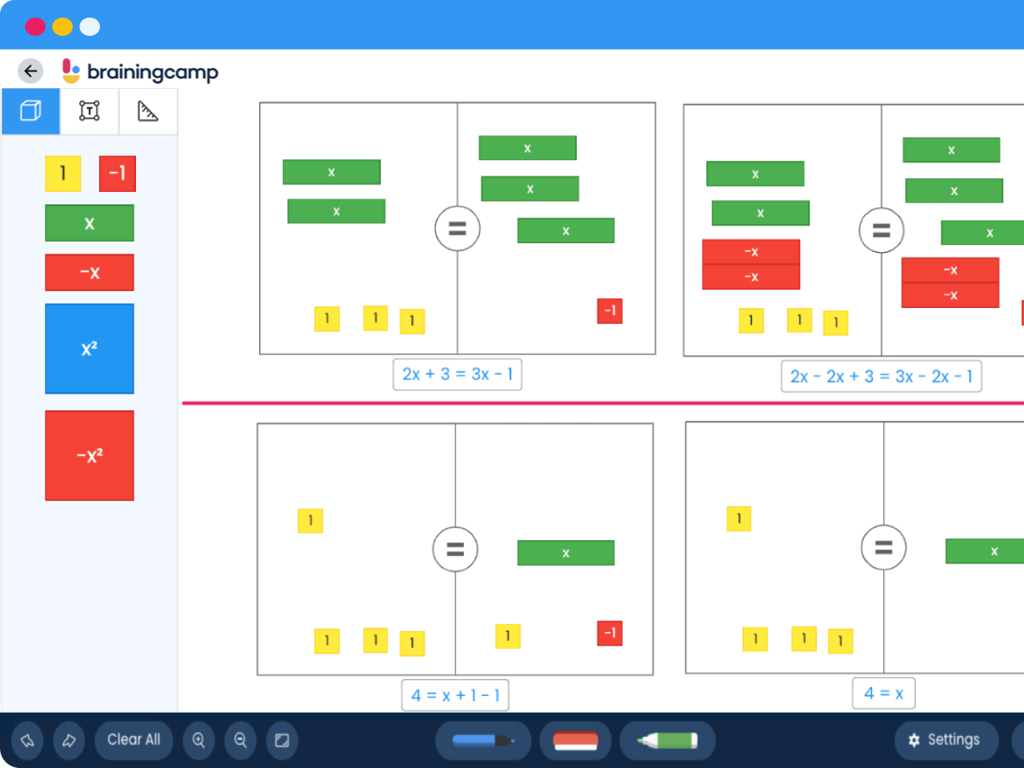Integer Division Rules
Subject: Math
Grade: Seventh grade
Topic: Operations With Integers
Please LOG IN to download the presentation. Access is available to registered users only.
View More Content
Welcome to Integer Division!
– Understanding integer division
– Division of integers with rules for positive/negative signs
– Significance in mathematics
– Fundamental for algebra, fractions, ratios
– Real-life integer division uses
– Budgeting, dividing items, or measuring distances
– Practice problems
|
This slide introduces the concept of integer division, which is a crucial part of arithmetic and is used extensively in higher-level math like algebra. Understanding the rules for dividing positive and negative integers is essential for students to solve more complex problems. Emphasize the importance of integer division in various mathematical concepts such as fractions and ratios. Discuss real-life applications like budgeting money, dividing items equally among a group, or measuring distances to make the concept more relatable. Include practice problems to reinforce learning, ensuring students grasp the rules for the signs and can apply them in different scenarios.
Understanding Integers in Division
– Define integers
– Integers include whole numbers and their negatives, excluding fractions and decimals.
– Positive vs. Negative numbers
– Positive numbers are greater than zero, negative numbers are less than zero.
– Real-life integer examples
– Temperatures below zero, bank debts, or elevations above sea level.
– Division rules for integers
– When dividing, like signs give a positive result, unlike signs give a negative result.
|
This slide introduces students to the concept of integers, which are the building blocks of math. Integers include all whole numbers and their opposites. It’s crucial to distinguish between positive and negative numbers, as this understanding is fundamental when applying division rules. Provide real-life examples where integers are used, such as temperatures for negative numbers or altitudes for positive numbers. Explain the rules for dividing integers: a positive divided by a positive or a negative by a negative results in a positive quotient, while a positive divided by a negative or vice versa results in a negative quotient. Encourage students to think of their own examples and to practice with simple division problems to solidify their understanding.
Rules of Integer Division
– Dividing two positive integers
– The quotient is positive
– Dividing two negative integers
– The quotient is positive
– Positive divided by negative
– The quotient is negative
– Negative divided by positive
– The quotient is negative
|
When dividing integers, it’s important to pay attention to the signs. Dividing two integers with the same sign (both positive or both negative) always results in a positive quotient. Conversely, if the integers have different signs, the quotient will be negative. For example, 8 ÷ 2 equals 4, and -8 ÷ -2 also equals 4, demonstrating that like signs result in a positive. However, 8 ÷ -2 equals -4, and -8 ÷ 2 equals -4, showing that unlike signs result in a negative. Encourage students to practice with different sets of integers to become comfortable with these rules. Provide additional examples and possibly a mini-quiz to reinforce the concept.
Dividing Positive Integers
– Positive ÷ Positive = Positive
– When dividing two positive numbers, the quotient is always positive.
– Example: 12 ÷ 3 equals 4
– This is similar to multiplication of positives.
|
This slide introduces the rule for dividing positive integers, which is foundational for understanding integer operations. Emphasize that the rule for division is straightforward when both integers are positive: the result is always a positive number. Use the example 12 ÷ 3 = 4 to illustrate this concept. Make sure to clarify that this rule is consistent with the multiplication of positive integers, as it helps to reinforce their understanding of positive number operations. Encourage students to come up with additional examples and practice dividing various positive integers to solidify their grasp of the concept.
Dividing Negative Integers
– Negative divided by negative equals positive
– When two negatives are divided, they cancel each other out.
– Example: (-12) ÷ (-3) = 4
– Dividing -12 by -3, we get a positive 4 as the result.
|
This slide focuses on the rule for dividing negative integers. It’s crucial for students to understand that when dividing two negative numbers, the negatives cancel out, resulting in a positive quotient. The example provided (-12) ÷ (-3) = 4 illustrates this rule. Encourage students to think of the negatives as opposites; when you divide two opposites, you end up with a positive. Have students practice with additional examples to reinforce the concept. Remind them that this rule is consistent with the multiplication of negatives, which they may have learned previously.
Mixed Integer Division
– Dividing with mixed signs
– Positive ÷ Negative = Negative
– For example, 12 ÷ (-3) equals -4
– Negative ÷ Positive = Negative
– For example, (-12) ÷ 3 equals -4
– Practice with examples
– Try (-18) ÷ 6 and 24 ÷ (-4)
|
This slide focuses on the rules for dividing integers when they have different signs. The key takeaway is that the result of dividing a positive number by a negative number, or a negative number by a positive number, is always negative. Provide students with the examples shown on the slide to illustrate this rule. Encourage them to remember that the sign of the result is determined by the signs of the numbers involved. For the practice examples, guide students to apply the rule and verify that (-18) ÷ 6 equals -3 and 24 ÷ (-4) equals -6. This will help solidify their understanding of mixed integer division.
Zero in Integer Division
– Dividing by zero is undefined
– Zero divided by a nonzero integer equals zero
– Examples of zero division
– 0 ÷ 5 = 0, but 5 ÷ 0 is not possible
– Non-examples to clarify
– 7 ÷ 1 ` 0, 0 ÷ 0 is also undefined
|
This slide focuses on the concept of zero within the context of integer division. It’s crucial for students to understand that any number divided by zero does not have a value, which is why we say it is ‘undefined.’ Conversely, when zero is divided by any nonzero integer, the result is always zero. Provide clear examples such as 0 ÷ 5 = 0 to illustrate this rule, and contrast with non-examples like 7 ÷ 1, which is not zero, to avoid misconceptions. Emphasize that division by zero is a condition that is not allowed in mathematics, and discuss why this is the case to deepen understanding. During the lesson, engage students with practice problems to solidify their grasp of these rules.
Let’s Practice Integer Division!
– Solve practice problems
– We’ll work through problems as a class
– Discuss solving strategies
– Share different methods for dividing integers
– Understand division rules
– Division by zero is undefined, negative divided by positive gives a negative result
– Apply rules to solve problems
– Use the rules to divide integers in practice exercises
|
This slide is designed for an interactive class activity focused on practicing integer division. Start by solving a few problems together as a class to demonstrate the process. Encourage students to discuss and share different strategies they might use to solve integer division problems. Review the rules for integer division, such as the fact that division by zero is undefined and that a negative number divided by a positive number yields a negative result. Then, have students apply these rules to solve a set of practice problems. Provide guidance and support as needed, and ensure that each student is engaged and understands the concepts before moving on.
Class Activity: Integer Division Relay
– Form small groups for the relay
– Each member solves a problem step
– Work together to complete the problem
– First group to finish wins a prize!
|
This activity is designed to encourage teamwork and reinforce the concept of integer division. Divide the class into small groups, and provide each group with a set of integer division problems. Each member of the group is responsible for solving one step of the problem, and they must work in sequence. The first group to correctly complete all steps and arrive at the correct answer wins. As a teacher, prepare to circulate the room to ensure that each group is on task and to provide guidance if necessary. Possible variations of the activity could include mixed-ability grouping, timed challenges, or incorporating complex problems for bonus points.
Wrapping Up: Integer Division Rules
– Recap division rules
– Review: Dividing positives/negatives
– Emphasize practice importance
– Practice leads to mastery
– Homework assignment
– Solve assigned problems for mastery
– Next class preparation
|
As we conclude today’s lesson on integer division rules, it’s crucial to recap the key points: dividing two positives or two negatives results in a positive quotient, while dividing numbers with different signs results in a negative quotient. Emphasize the importance of practice in mastering these concepts. Assign a set of problems as homework to reinforce today’s lesson. Ensure students understand the homework and remind them to bring any questions to the next class for clarification. This will help solidify their understanding and prepare them for more complex mathematical concepts.





